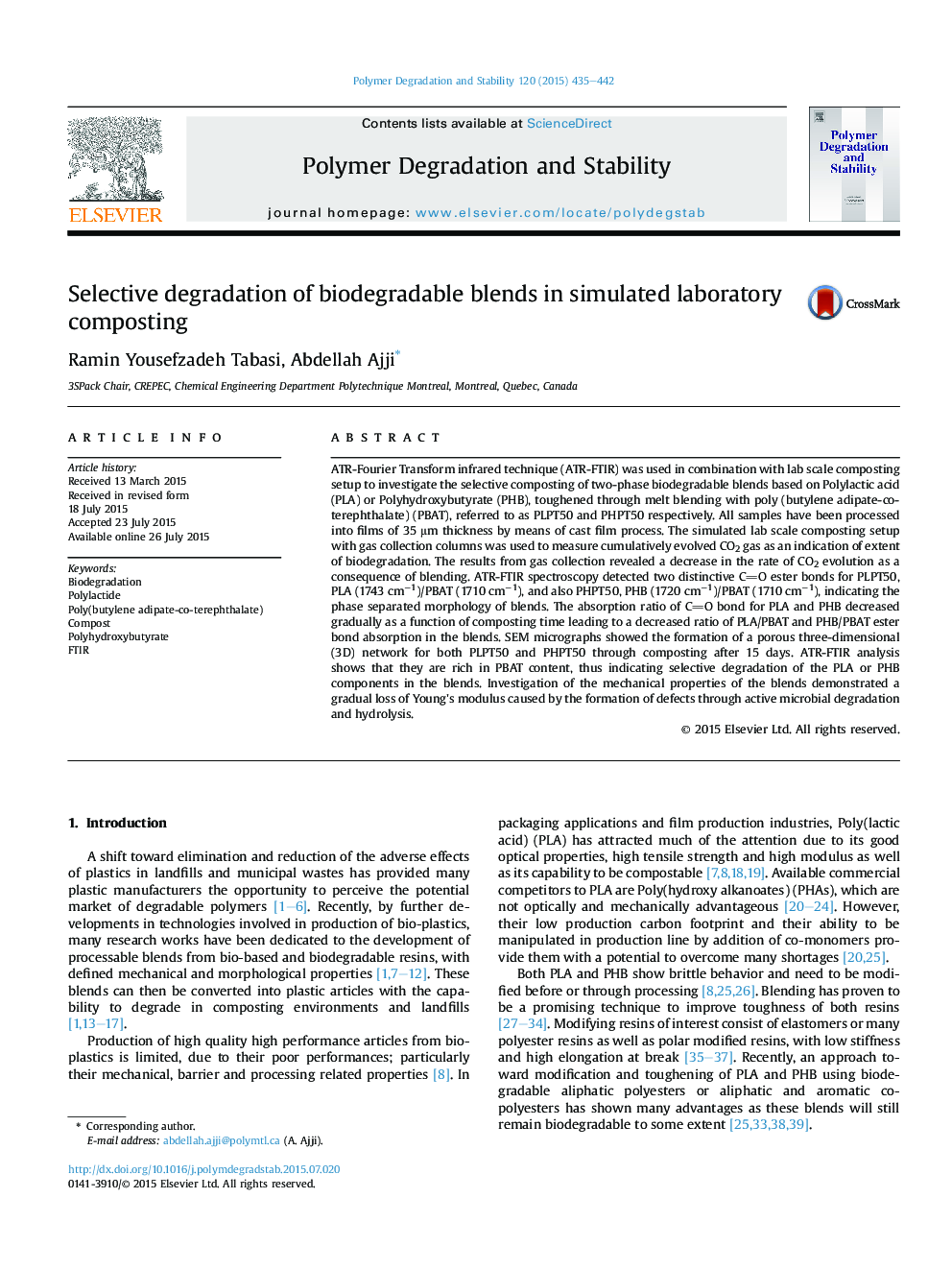| Article ID | Journal | Published Year | Pages | File Type |
|---|---|---|---|---|
| 5201328 | Polymer Degradation and Stability | 2015 | 8 Pages |
ATR-Fourier Transform infrared technique (ATR-FTIR) was used in combination with lab scale composting setup to investigate the selective composting of two-phase biodegradable blends based on Polylactic acid (PLA) or Polyhydroxybutyrate (PHB), toughened through melt blending with poly (butylene adipate-co-terephthalate) (PBAT), referred to as PLPT50 and PHPT50 respectively. All samples have been processed into films of 35 μm thickness by means of cast film process. The simulated lab scale composting setup with gas collection columns was used to measure cumulatively evolved CO2 gas as an indication of extent of biodegradation. The results from gas collection revealed a decrease in the rate of CO2 evolution as a consequence of blending. ATR-FTIR spectroscopy detected two distinctive CO ester bonds for PLPT50, PLA (1743 cmâ1)/PBAT (1710 cmâ1), and also PHPT50, PHB (1720 cmâ1)/PBAT (1710 cmâ1), indicating the phase separated morphology of blends. The absorption ratio of CO bond for PLA and PHB decreased gradually as a function of composting time leading to a decreased ratio of PLA/PBAT and PHB/PBAT ester bond absorption in the blends. SEM micrographs showed the formation of a porous three-dimensional (3D) network for both PLPT50 and PHPT50 through composting after 15 days. ATR-FTIR analysis shows that they are rich in PBAT content, thus indicating selective degradation of the PLA or PHB components in the blends. Investigation of the mechanical properties of the blends demonstrated a gradual loss of Young's modulus caused by the formation of defects through active microbial degradation and hydrolysis.
